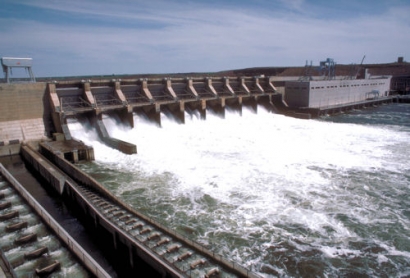
The fully operational hydropower stations across China’s landscape currently produce more electricity than the electric grids present in any other nation. The two most recent and impressive additions to China’s collection of hydropower stations are managed by the China Three Gorges Corporation.
China Three Gorges Corporation is a state-owned power company in China. The corporation is most known for (and named after) their most famous project - The Three Gorges Dam. The Three Gorges Dam became fully operational in 2008, and still stands today as one of the world’s largest hydroelectric power plants.
The most recent project completed by China Three Gorges Corp. is the Wudongde Hydropower Station. As of June 29, the first unit of the Hydropower Station - China’s fourth largest and world’s seventh largest station - is now in operation. The station has a capacity of 10.2 million kilowatts and an average annual generating capacity of 38.91 billion kilowatts.
Due to its large size, the Wudongde Hydropower Station has the ability to block the Yangtze River Basin and create a reservoir that stores 7.4 billion cubic meters of water. Uniquely, the architecture of the station resembles a delicate eggshell shape, and has been officially classified as the world’s thinnest 300-meter dam. By utilizing this station, China avoids the necessity of using an estimated 12.2 million tons of coal while producing more energy than the produced by all hydropower stations currently present in the Philippines.
A bit further downstream from the Wudongde station sits the second most recent project by the China Three Gorges Corporation: the Baihetan station. Similar in size and operational qualities to the Wudongde station, the Baihetan is projected to be operational sometime in 2021 and reach full capacity in 2022.
Since the beginning of the century, China’s hydropower projects have allowed the country to quadruple its installed capacity and account for over half of global growth in the hydropower industry. With the Wudognde and Baihetan stations completion, China will have completed the construction of five of the world’s largest hydropower stations in 10 years. The completion of these two hydropower stations has marked the end of a mega-dam building era in China’s history.
Large hydropower stations require substantially large amounts of flowing water that travel down a path of steep altitude. Since China has utilized most of the suitable locations for large projects, any potential hydropower projects in the future will have to be adjusted to smaller sizes. The only locations left are 10-gigawatt-sized dams that are currently being constructed and established in permits, and are either unsuitable for mega-dams in size or terrain for a large mega-dam construction project.
If China continues to build their hydropower industry further, the future projects will be 1-3 gigawatt sized stations to accommodate the size of remaining natural water resources and environments. Smaller projects of hydropower are typically classified as pumped-hydro projects because of their ability to provide storage space for intermittent renewable energy.
With this shift in available space the trajectory for mega-dam hydropower projects is expected to reduce rapidly across China’s soil. Local attention in China’s renewable energy industry is shifting towards cheaper options, like solar development projects. These alternatives are less expensive and still provide beneficial returns of investments.
“It’s so cheap developing renewables and coal-fired power, why bother injecting huge sums of money to develop hydro 2,000 kilometers deep in the Tibetan plateau,” said Frank Yu, an analyst with Wood Mackenzie Ltd. “The future of hydro is going to be pumped storage and is also going to be smaller and smaller.”
However, China has recognized their success and abundant electricity generation from their hydropower stations, and the country has already decided to expand this industry on an international scale. Chinese hydro companies are heavily investing in potential projects overseas, and recent plans with Pakistan have circulated across several news outlets.
The nation certainly has the funding to see these construction endeavors through. According to the Boston University Global Development Policy Center, major development banks in China have financed nearly $44 billion worth of hydropower projects globally since 2000. If international neighbors agree to allow China to construct more stations on their soil, then maybe the hydropower industry of China will not face a downward spiral after all. Projects will continue to drop in size, and public opposition, a long foe of development of large hydro, may lessen as well.
Al Maiorino started Public Strategy Group, Inc. in 1995. His firm has developed and managed multiple corporate public affairs campaigns in a variety of industries such as gaming, cable television, retail development, auto racing, energy and residential projects. Additionally, his firm has worked on projects in twenty-seven states and three countries.

